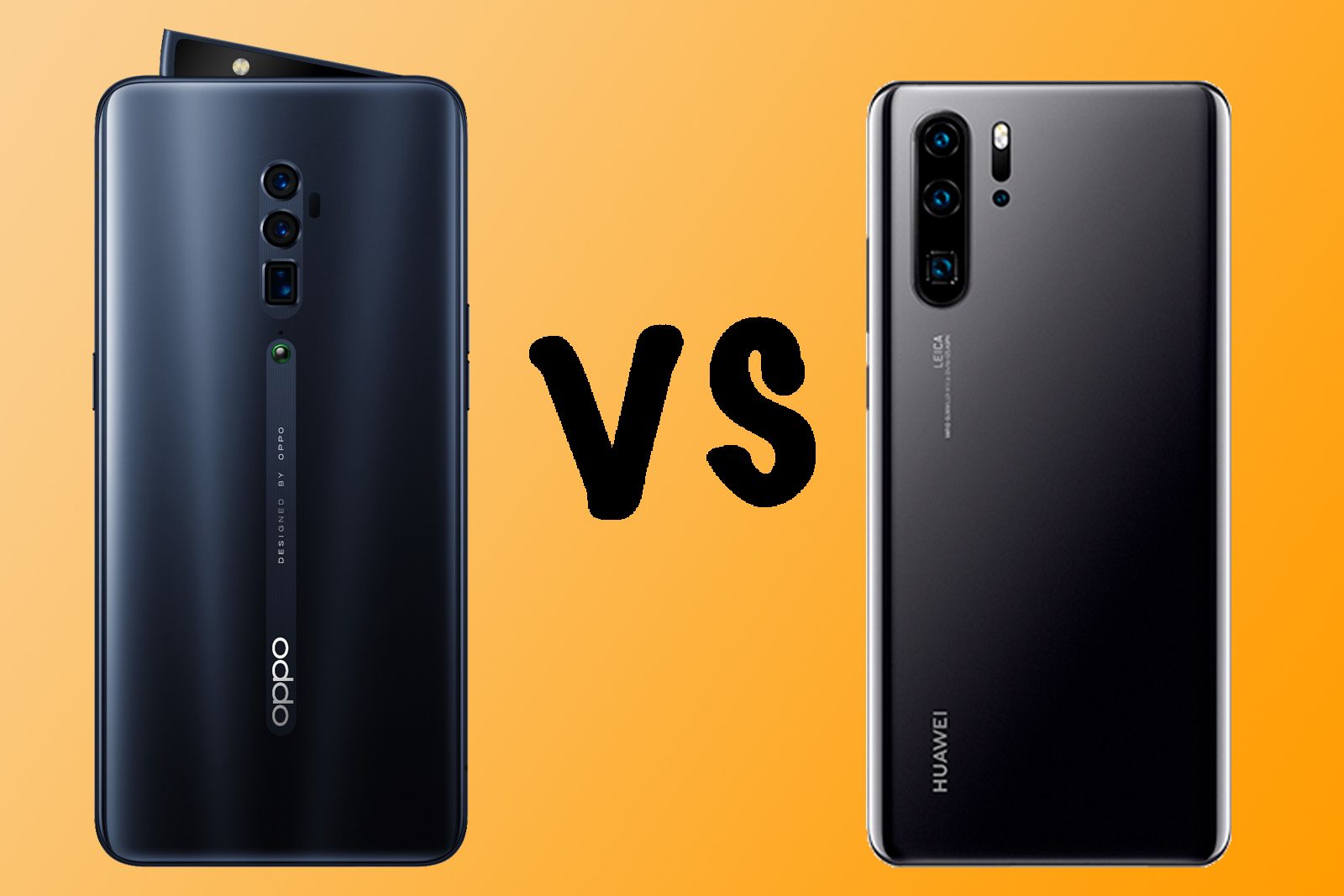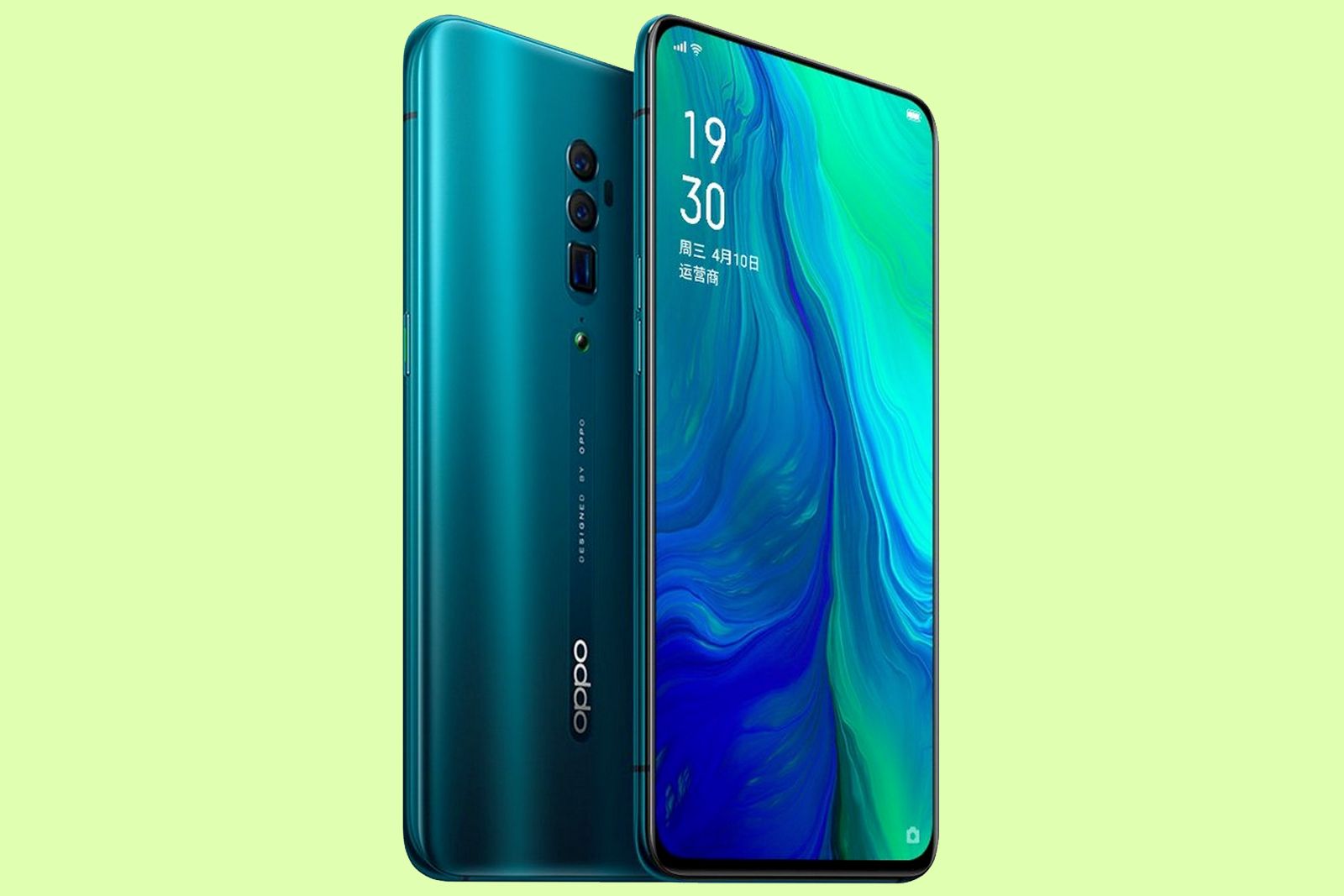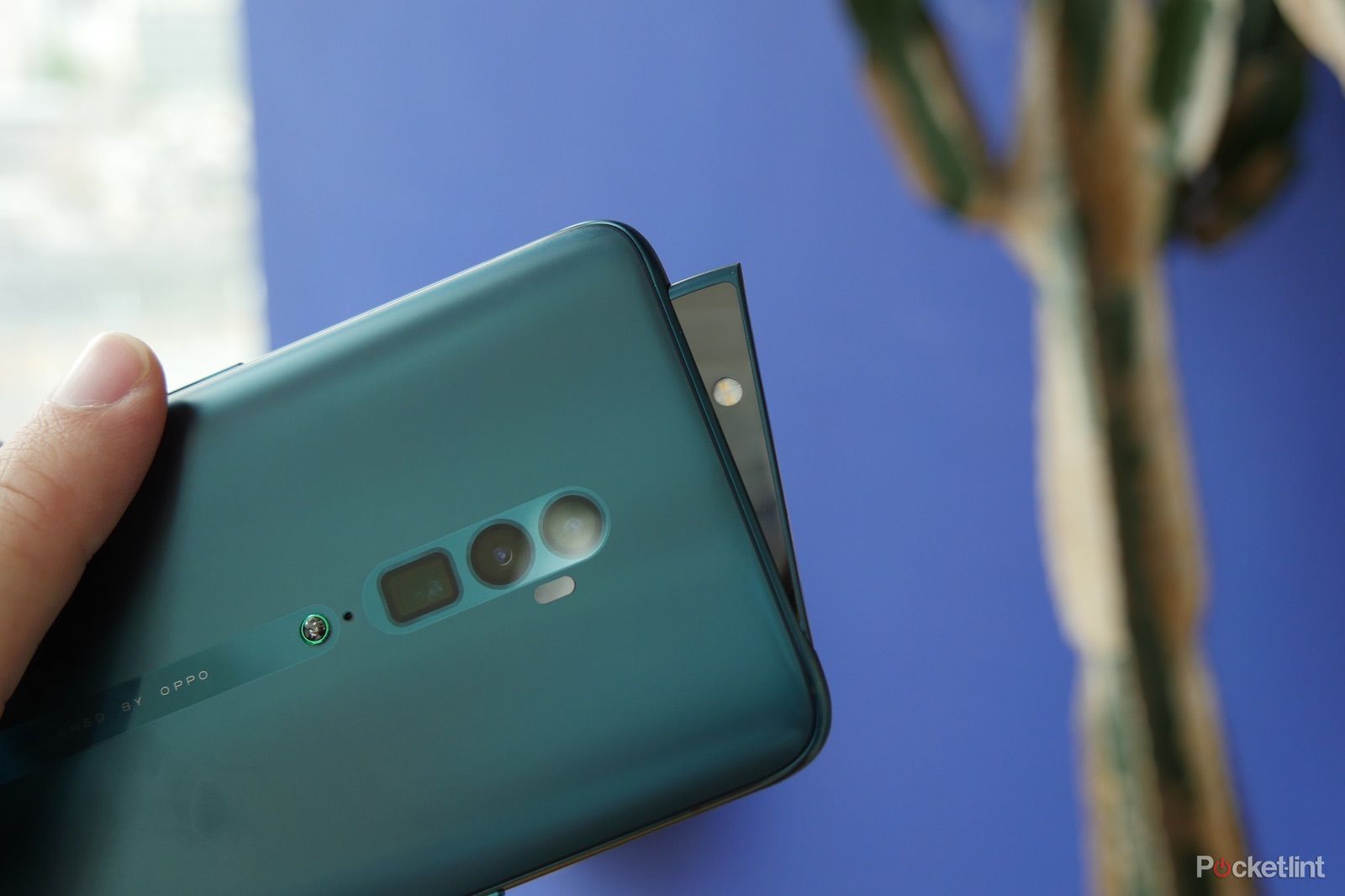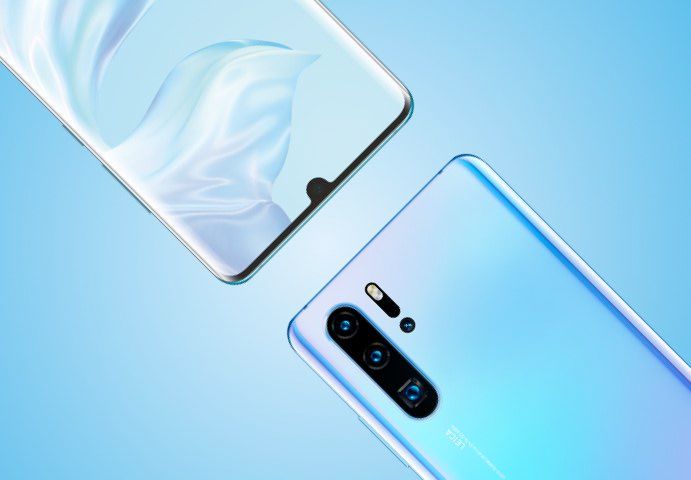Oppo's new Reno flagship phone series has launched, with varying tiers of price, power and performance. The standard Reno device has Huawei's P30 in its sights, but with the Oppo Reno 10x Zoom, its most obvious competitor and comparison point is the Huawei P30 Pro.
Here we've compared the Reno 10x Zoom with the P30 Pro to help you decide which might be the right flagship phone choice for you.
Coincidentally, the specs for the Reno 5G phone are the same as these but with the addition of Qualcomm's X55 5G-capable modem. The standard Oppo Reno handset is significantly different, however.
Price
- Oppo Reno 10x Zoom: £699
- P30 Pro: From £899
The 256GB Oppo Reno 10x Zoom starts at £699, which is a great pricer for a phone with so much storage. Huawei's P30 Pro - on the other hand - starts at £899 (it's an extra £100 for the 256GB model and £200 for the 512GB model). Clearly then, the Reno 10x zoom undercuts the P30 Pro by some margin.
Oppo Reno 10x Zoom
Design
- Oppo Reno 10x Zoom: 162 x 77.2 x 9.3 mm, 210g
- P30 Pro: 158 x 73.4 x 8.41mm, 192g
The Oppo Reno series comes with two colour choices - ocean green and jet black. The P30 Pro on the other hand, comes in several colours - Breathing Crystal, Amber Sunrise, Aurora, Pearl White and Black.
Both the Oppo Reno and P30 Pro opt for a vertical camera arrangement, but while the P30 Pro's is on the left-side, the Reno's is central. What we like about Oppo's design is that, not only does it make the phone symmetrical from the back, its camera system is also completely flush with the back surface, so there's no protrusion at all.
The P30 Pro is IP68 water and dust resistant and has a glass back made from Corning Gorilla Glass 5 with a fairly pronounced protrusion where the advanced camera system sits (more on that later).
Both these devices offer almost total screen coverage of the front of the device. With that said, the Oppo is slightly more impressive, given that the Huawei P30 Pro has a water drop notch at the top of the display.
Oppo hides its front facing camera in a pop-up shark-fin style mechanism that pivots up and out of the top edge, while Huawei's selfie cam is in the dewdrop notch mentioned above.
The big difference you notice when picking up the phones is the size and heft. Oppo's device is almost a full 1mm thicker than Huawei's, and also considerable taller and wider in smartphone terms. It's also heavier. It's a bit of a brute in comparison, and not quite as easy to use one-handed.
Display
- Oppo Reno 10x Zoom: 6.6-inch, AMOLED, 1,080 x 2,340 pixels, 19.5:9, 387ppi
- P30 Pro: 6.47-inch, OLED, 1,080 x 2,340 19.5:9, 398ppi
In terms of size, the P30 Pro's screen is 6.47-inches, while the Oppo handset ups the ante at 6.6-inches. Both have the same aspect ratio of 19.5:9 and the same resolution, but due to its smaller size, the P30 Pro's screen is a little more pixel dense.
When it comes to watching movies and videos, HDR10 kicks in on compatible titles and supported video apps. Huawei's screen is bright and colourful, with enough detail to keep anyone happy.
The P30 Pro remarkably uses the screen as a speaker and has a dual-curved display - the Reno is flat, with no curve to the display, and it features Corning Gorilla Glass 6. This can make a difference to the viewing experience, in that you don't get any of the slight colour distortion at the edges when viewing the screen at certain angles like you might with the curved edge display on the Huawei.
Oppo doesn't offer HDR support, but on a mobile screen, the benefits of that are much more minimal than it might be on a big screen OLED TC with 1000 nits brightness in your front room. In truth, both phones are well equipped for any amount of binge-watching on Netflix.
squirrel_widget_147530
Cameras
- Oppo Reno 10x Zoom: Triple rear (48MP, 13MP, 8MP), 16MP front
- P30 Pro: Quad rear (40MP, 20MP, 8MP), 32MP front
The Reno 10x Zoom has three camera lenses – a 48 megapixel primary, 8 megapixel ultra-wide and 13 megapixel telephoto. The primary lens uses Sony’s IMX586 sensor, a f1.7 aperture and there’s also dual-optical image stabilisation.
As we mentioned, the pop-up houses the 16 megapixel (f2.0) front camera and a flash and earpiece. Excitingly it also
The P30 Pro has a 40-megapixel main sensor with an f/1.6 aperture, a 20-megapixel ultra-wide sensor with an f/2.2 aperture and an 8-megapixel zoom lens with an f/3.4 aperture. There's also a Time of Flight sensor for depth. The P30 Pro offers 5x optical zoom, 10x hybrid zoom and 50x digital zoom.
Both phones offer dual OIS (Optical Image Stabilisation) and 4K 60fps video recording.
In the day time, in good light, you'll get great results from both of these cameras, whether you're zooming in or staying at wider focal lengths. You get crisp, even shots with good details and colour. It's at night time when Huawei pulls ahead.
The low light capabilities of the P30 Pro are, quite simply, astonishing. Even in automatic mode, it pulls in tonnes of light without the need for a flash and somehow produces great photos. Kick it into night mode, and you'll get a similar result - light wise - but with sharper, clearer definition and a bit more contrast.
Hardware
- Oppo Reno 10x Zoom: 128 or 256GB, 8GB RAM, 4,065mAh battery
- P30 Pro: Kirin 980, 128GB storage, 8GB RAM, 4200mAh battery
The Huawei P30 Pro runs on the company's own Kirin 980 platform - the same as the Mate 20 Pro. The Oppo Reno 10x Zoom runs on the Qualcomm Snapdragon 855 platform. In daily use, both phones are fast and fluid, and capable of loading the most demanding mobile games and apps, so you don't have to worry about slow performance with either phone.
The Opoo Reno 10x zoom comes in 128 and 256GB versions with 8GB of memory. It has a microSD card slot for expansion.
The P30 Pro comes with 8GB of RAM and three storage options of 128GB, 256GB and 512GB. It offers expanded storage through Huawei's Nano Memory card up to 256GB.
In terms of battery, Huawei's P30 Pro has a slightly bigger 4,200mAh capacity than the Reno's 4,065mAh. The P30 Pro also has wireless charging and reverse wireless charging. The Oppo Reno series doesn't have wireless charging. Instead, Oppo prefers to talk about its fast VOOC Flash Charge tech, but at 20W it's about half as powerful as the 40W SuperCharge tech that comes with the Huawei.
What that means, is that in your every day busy lives - and in our experience - the Huawei battery will last a bit longer, and charge up quicker than the Oppo. Plus, it has the versatility of wireless charging thrown in, so if you have a charging base, you can just plonk it down and let it do its thing without routing around for a cable.
Each of the devices has an in-display fingerprint sensor. In this particular instance, we found the Oppo to be quicker and a bit more reliable, but there wasn't much in it.
Software
- Oppo Reno 10x Zoom: Android 9 with ColorOS 6.0
- P30 Pro: Android 9 with EMUI 9.1
The Huawei P30 Pro runs on Android Pie with Huawei's EMUI 9.1 software over the top, while the Reno series runs on Android Pie with ColourOS 6.0 over the top.
EMUI has improved significantly over recent generations and the same is true of ColorOS. Which you like most is almost entirely down to personal preference, but they both share similar features. You can customise them with themes with both of them whenever you get bored of your home screen look.
Conclusion
The Oppo Reno 10x Zoom is a fine new entrant to the market, but it's clear that Huawei is a little ahead with the P30 Pro in terms of basic specs, and performs a little better in some areas. It's slightly better in several areas, such as the wireless charging support, better night time camera shots and faster charging.
However, the Oppo handset is significantly cheaper and so will is a compelling option for many providing. If you want something a little different, the Oppo does have that fantastic zoom, the innovative shark fin and a really very nice design.




